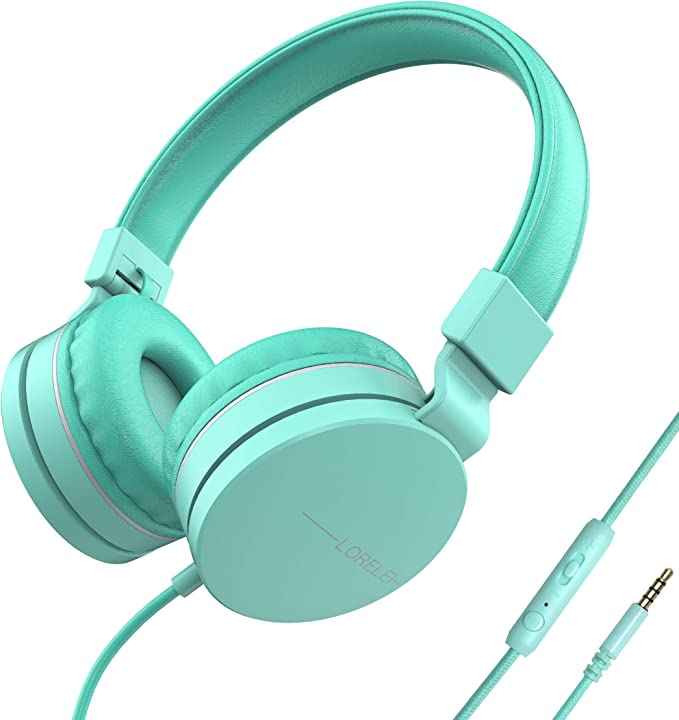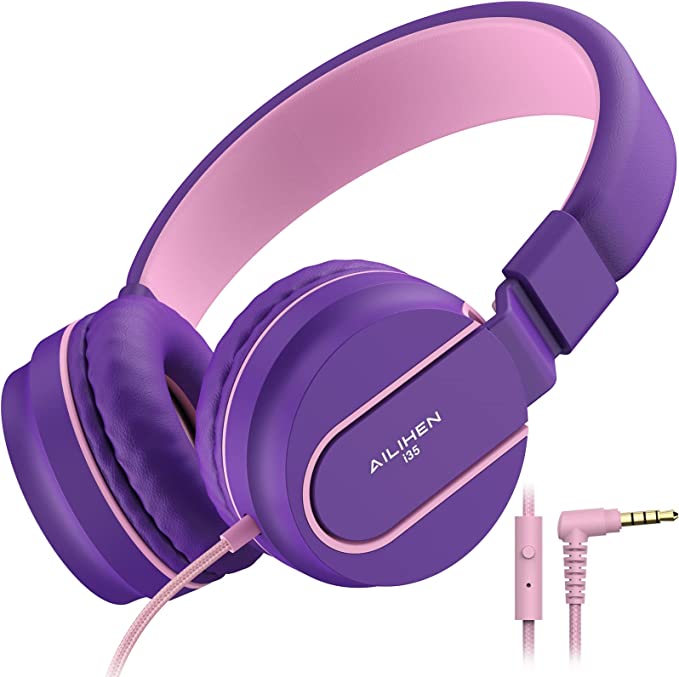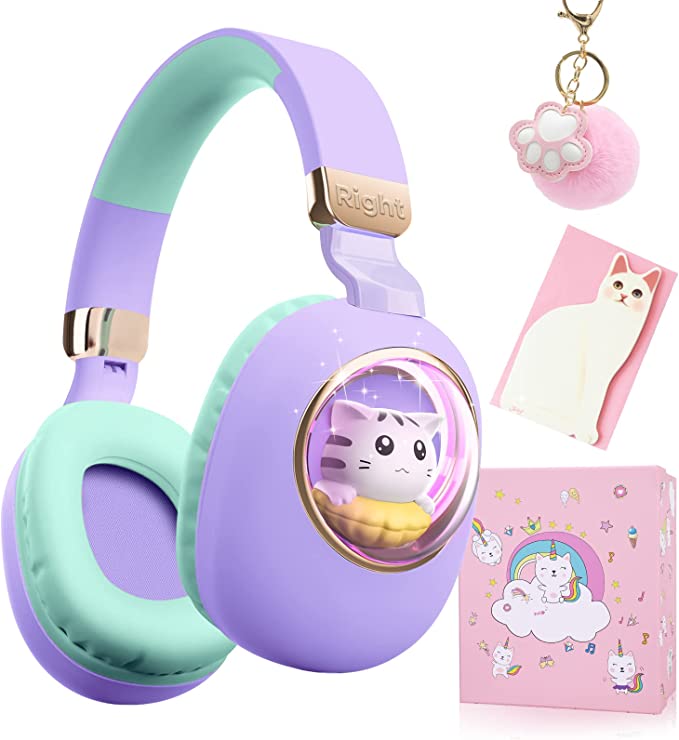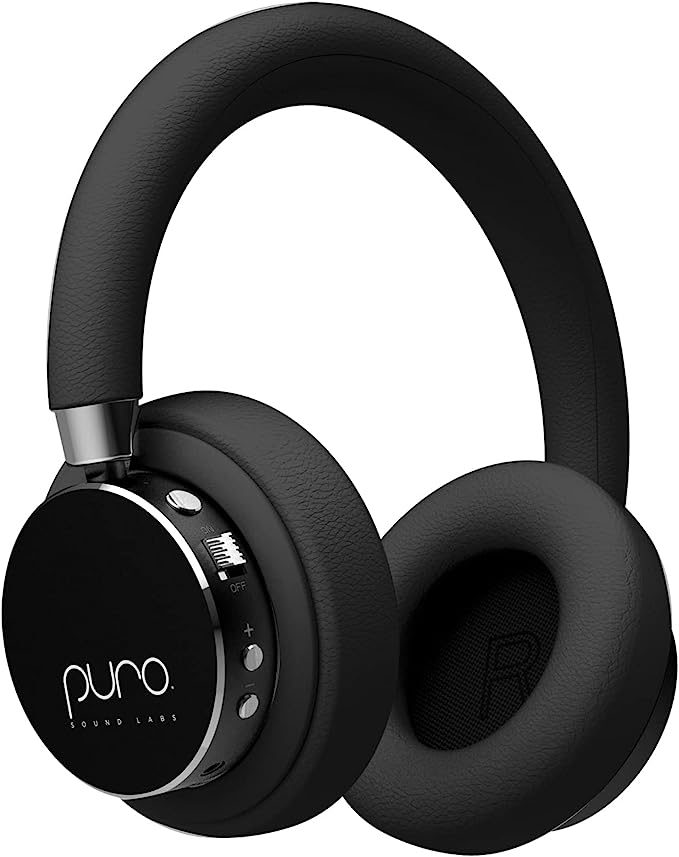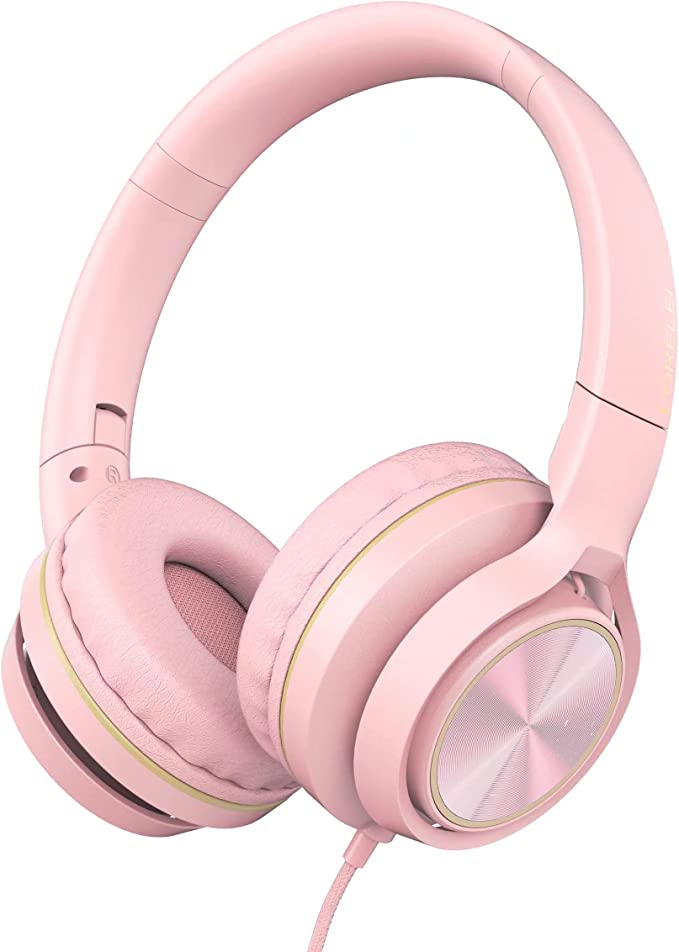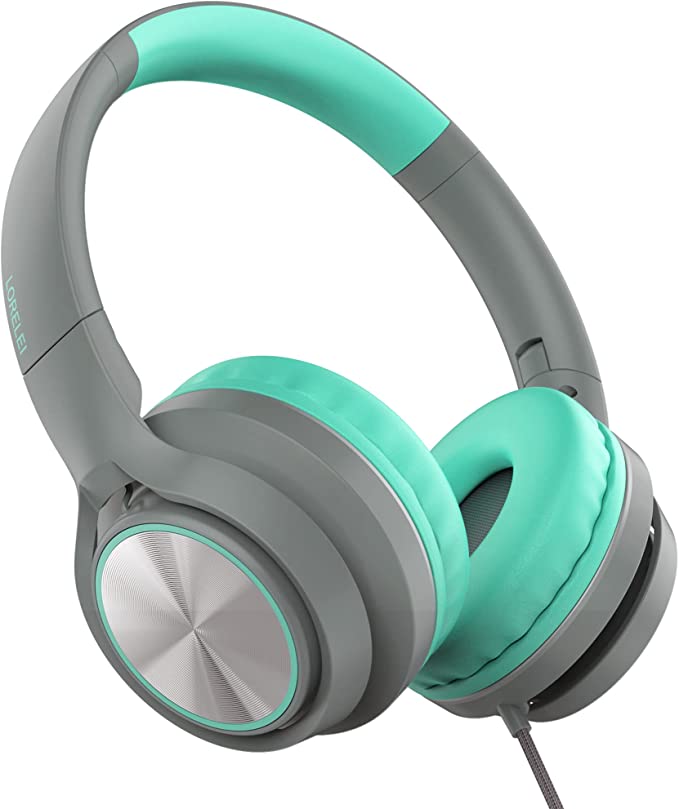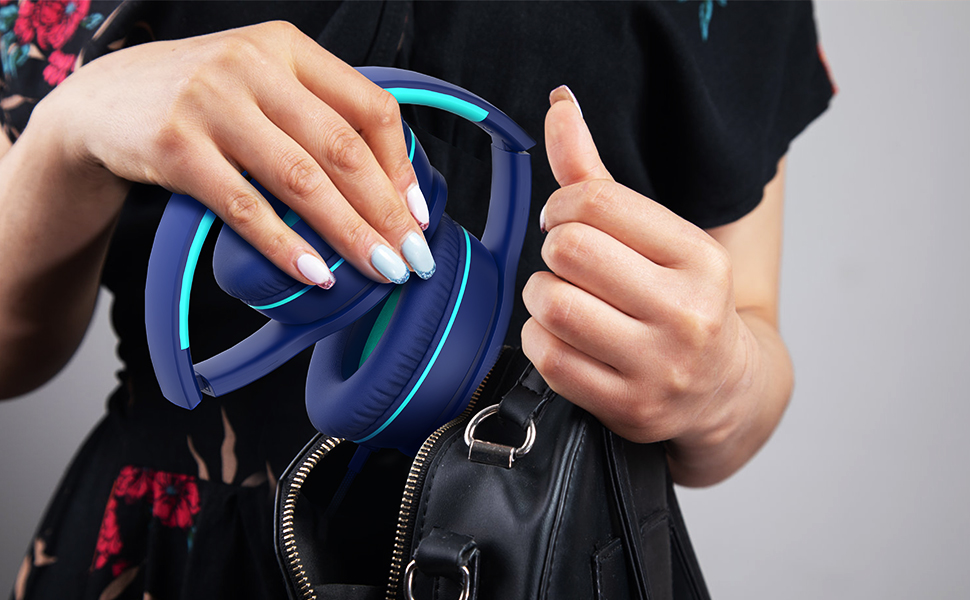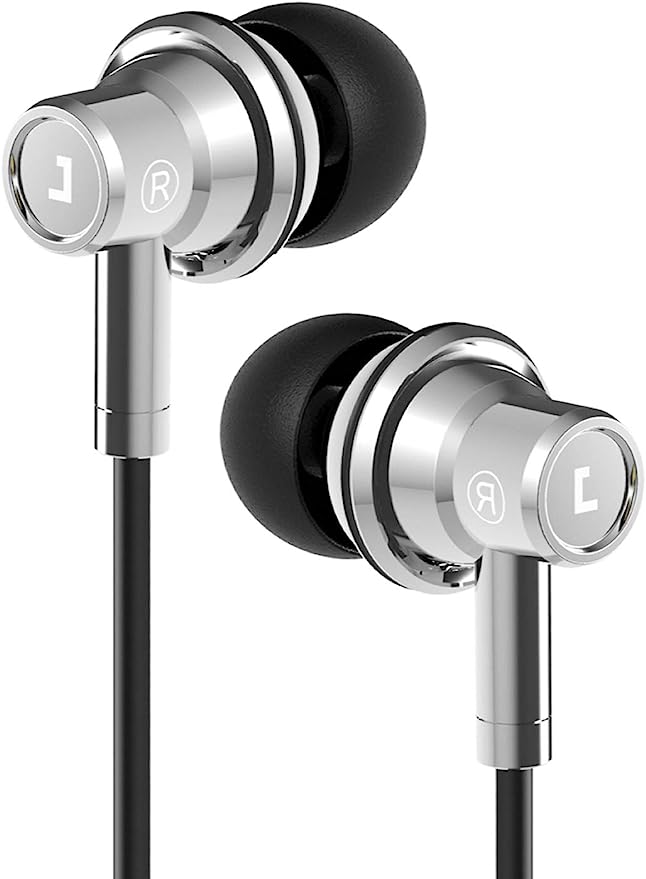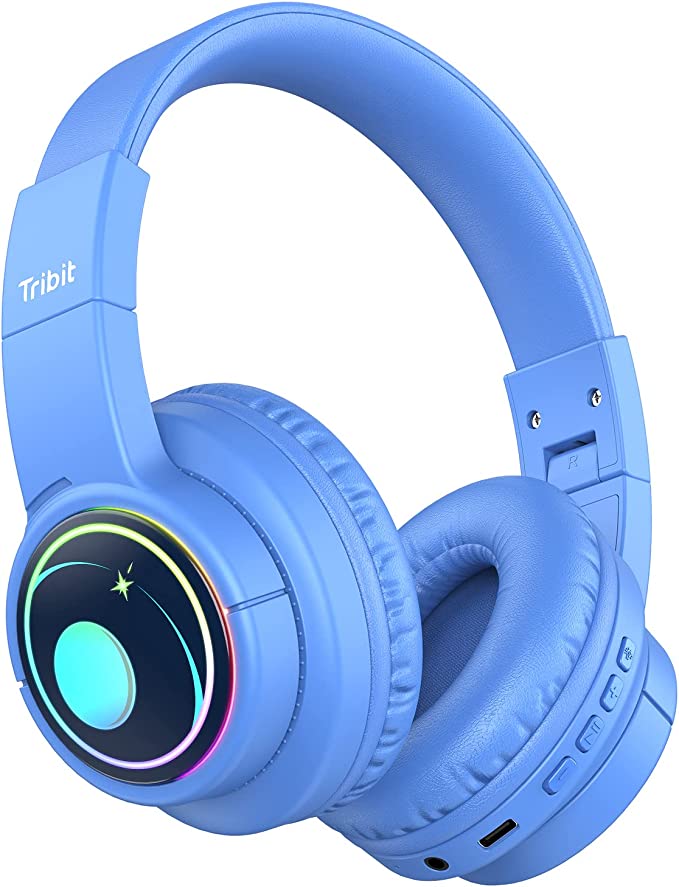ELECDER i41 Kids Headphones: A Budget-Friendly Option for Young Audio Enthusiasts
Update on June 21, 2025, 6:37 a.m.
The soundtrack to modern childhood is rich and varied, often delivered through a pair of headphones. Whether it’s for an online class, a long car journey film, or just grooving to their favorite tunes, children today are more plugged-in than ever. This presents a quest for parents: finding headphones that are engaging, can withstand the rigors of youthful enthusiasm, fit comfortably, and, crucially, protect those precious developing ears. The ELECDER i41 Kids Headphones frequently appear as a popular, budget-friendly option. But what’s really under the hood, and what vital considerations might be easy to miss?

First Impressions: More Than Just Bright Colors
Children are often drawn to vibrant aesthetics, and the ELECDER i41 comes in a range of appealing colors. Beyond the visual, though, practical design for little users is key. Weighing in at a mere 5.8 ounces (around 164 grams), these headphones are commendably lightweight. Think about it – that’s less than a can of soda, meaning less strain on a child’s head and neck during use. This thoughtful lightness is complemented by an adjustable headband. Just like a well-fitted cap, a properly adjusted headband ensures the earcups sit correctly and distribute pressure evenly, a fundamental of good ergonomic design for growing bodies.
The comfort journey continues with the on-ear earpads, described as a “Comfortable Cushion Pad.” When a child might be wearing headphones for an extended period, the materialพวกเขาสัมผัสได้นั้นสำคัญมาก. Soft, breathable materials prevent irritation and excessive heat build-up. The on-ear design itself means the cushions rest directly on the outer ear. This style offers a balance between immersive sound and some awareness of the surroundings, distinct from over-ear designs that fully enclose the ear.

The World of Sound: How the i41 Makes Music (and More)
Ever wondered how that favorite song or story magically travels from a tablet into your child’s ears? With the ELECDER i41, the journey begins at the 3.5mm L-shaped plug. That “L” shape isn’t just a stylistic quirk; it’s a clever bit of engineering that reduces strain on the cableంచిจุดเชื่อมต่อกับอุปกรณ์, making it less prone to damage from accidental tugs and bends – a common occurrence with kids! This plug channels an electrical audio signal through the cord to the heart of the headphones: the 40mm drivers nestled within each earcup.
Think of these drivers as tiny, sophisticated drums. Each one contains a diaphragm – a thin membrane – that vibrates rapidly in response to the electrical signals. These vibrations create pressure waves in the air, which our ears interpret as sound. The “40mm” refers to the diameter of these drivers. Generally, a larger driver can move more air, which can be beneficial for producing a fuller sound, especially in the lower frequencies, or bass. ELECDER highlights “Stereo bass headphone” and “HIFI strong low bass.” “Stereo” simply means that there are two separate audio channels, one for each ear, creating a more engaging and spatially defined listening experience. While deep bass can be fun, for children, a balanced sound profile that doesn’t overly emphasize any single frequency range is often more suitable and potentially safer if it discourages a tendency to increase overall volume.
The i41 also boasts of its ability to “block ambient noise.” This is achieved through passive noise isolation. Imagine the earcups and their soft cushions forming a gentle, physical barrier around the child’s ears. This barrier helps to muffle some of the distracting hustle and bustle of the outside world – the chatter in a classroom, the hum of a car on the highway – allowing the child to focus on their audio content, potentially at a lower, more comfortable volume. It’s important to understand this isn’t the same as Active Noise Cancellation (ANC), which uses complex electronics to actively counteract external sounds. Passive isolation is simpler, but often quite effective for everyday situations.

Built to Survive Childhood: The Durability Angle
If there’s one thing kids are good at, it’s putting their belongings through unintentional endurance tests. The ELECDER i41 seems designed with this in mind, particularly its cord. Described as using “high quality cloth” and “Premium nylon fabric,” this isn’t just about looks. Nylon is a synthetic polymer renowned in materials science for its impressive strength, flexibility, and resistance to abrasion. When these fibers are woven into a fabric sheath around the delicate internal wires, they act like a flexible suit of armor. This construction significantly enhances the cord’s ability to withstand pulling, yanking, and the general wear and tear of daily use. It also inherently reduces the dreaded tangling that can turn a simple pair of headphones into a frustrating knot – a small but significant win for both kids and parents. The 4.9-foot (1.5m) length offers a good balance of freedom of movement without excessive slack.
Adding to the practicality, especially for families on the go or for school use, is the foldable design. The earcups pivot inwards, allowing the headphones to collapse into a more compact form. This makes them easier to tuck into a backpack or suitcase, ready for the next adventure or study session.

The Unspoken Volume: A Critical Conversation on Hearing Safety
Now, we arrive at the most crucial part of our discussion, an aspect that, if overlooked, can have lasting consequences: hearing safety. A child’s auditory system is a marvel of biological engineering, but it’s also more delicate and vulnerable than an adult’s, especially during its developmental stages. Prolonged exposure to loud sounds can lead to Noise-Induced Hearing Loss (NIHL), a condition that is, unfortunately, often irreversible. Health organizations like the World Health Organization (WHO) and the American Academy of Pediatrics (AAP) provide guidelines on safe listening levels, often citing around 85 decibels (dB) as a maximum exposure for adults for up to eight hours. For children, the consensus is that even greater caution is warranted – lower volumes and shorter listening durations are always advisable.
Many headphones designed specifically for children incorporate a vital safety feature: a built-in volume limiter. This is an electronic circuit that physically prevents the headphones from exceeding a predetermined safe maximum volume, regardless of how high the source device’s volume is set.
This brings us to a critical point regarding the ELECDER i41. Based on available user feedback (such as a customer review specifically stating “No noise limiter”) and the absence of any such claim in the product’s official description, it appears the ELECDER i41 kids headphones do not feature an integrated volume-limiting circuit.
This is a significant omission for a product marketed towards children. Without this internal safeguard, the headphones can output sound at whatever level the connected device – be it a phone, tablet, or computer – is capable of producing. Many modern devices can easily push volumes far beyond safe thresholds for young ears. The “excellent sound” can, if unchecked, become a source of potential harm.

Parental Power: Your Role as the Guardian of Healthy Hearing
The absence of a built-in volume limiter in the ELECDER i41 places a clear and direct responsibility on parents and caregivers. Fortunately, you have the power to manage this risk effectively:
-
You Are the Primary “Volume Control”: This is paramount. Always, always check and set the volume level on the source device yourself before your child uses the headphones. Aim for a moderate level – a good rule of thumb is if you can comfortably hold a conversation with someone nearby while your child is listening, the volume is likely too high. Many smartphones and tablets (like those running iOS or Android) have built-in settings or parental controls that allow you to set a maximum volume output for headphones. Investigate these features on your child’s devices and use them.
-
Teach Safe Listening Habits: Have open conversations with your child, in an age-appropriate way, about why very loud sounds can be harmful. Encourage them to take regular listening breaks, perhaps every hour, to give their ears a rest. Instill the understanding that “louder” doesn’t mean “better.”
-
Listen for Clues: Be observant. If your child complains of ringing in their ears (tinnitus), or if the sound from their headphones is easily audible to someone standing a few feet away, these are red flags that the volume is too high.
Weighing It All Up: An Informed Choice for Your Child
The ELECDER i41 Kids Headphones undoubtedly present some appealing features for their budget-friendly price. They offer a design that considers child-centric needs: vibrant colors, a lightweight and adjustable build for comfort, a notably durable nylon-braided cord that resists tangles, and the convenience of a foldable design. The sound quality, described as “excellent” with “stereo bass,” is likely to be enjoyable for everyday listening for most young users.
However, these positive attributes must be weighed against the critical caveat: the apparent lack of an integrated volume limiter. This isn’t a minor detail; it’s a fundamental safety consideration when it comes to children’s audio products. While ELECDER’s vision, as stated in their “About Us” section, is to “Do Something Cool” and “keep the spirit of exploration and innovation,” one might gently suggest that truly “cool” and innovative design for children’s products should consistently prioritize their well-being, with built-in safety features like volume limiting becoming a standard, not an exception.

So, can the ELECDER i41 be a reasonable choice? Potentially, yes – but only with diligent, proactive, and consistent volume management by an informed adult. If you, as a parent, are prepared to take on the role of the primary volume controller and educator, these headphones can serve as a functional and affordable option.
Ultimately, the best choice you can make for your child is an informed one. Understanding the features, the science behind them, and, most importantly, any potential risks allows you to navigate the world of children’s tech responsibly. It’s about balancing fun, functionality, and the unwavering commitment to safeguarding your child’s precious hearing for a lifetime of happy listening.
